How to Color Your Corals
(Coral Coloration)
Everyone wants brightly colored corals in their aquarium. Corals often fade in coloration and change colors entirely. Several factors can affect the color of your corals, including
lighting,
trace elements, and nutrients.
Proper Expectations
The first thing to keep in mind when starting your journey to more colorful corals is proper expectations. The well-known Aquarist Steve Weast has said, “Our aquariums are artistic representations of nature.” If this is the case then Instagram pics and other internet photographs of corals are artistic representations of artistic representations of the real thing. The images we see online of corals are often completely unrealistic and it can be near impossible to get actual corals that look as good as many online pictures. There is often a lot of post-processing as well as special lighting and plenty of editing before a picture is posted online. Try to shop for corals in person in order to get familiar with what colors are actually possible for different types of corals. They can look beautiful just not as extreme as things can look in the digital world.
Healthy Corals are Beautiful Corals
If corals in your tank are dying, they will not look good. If you are still struggling to keep the corals you have, then focus on getting them alive and thriving before getting them more colorful. The best indication of coral health is growth. Corals only grow when they are healthy. When growth stops this can be a sign they are struggling to stay alive. Once your tank is full of healthy growing corals, they will look good but they might be able to look better with some attention to detail.
 Nutrients
NutrientsResearchers at Wageningen University in The Netherlands studied the effects of nutrient levels on corals. Corals were taken from the same mother colonies and then grown out in different nutrient conditions but with the same lighting, flow, and maintenance. Nutrient levels can dramatically change the color of corals. In general, corals that are grown at higher nutrient levels look darker, and corals at lower nutrient levels look pale (
see included photo).
This research illustrates just how important nutrient levels are when it comes to coral color. If your nitrate and phosphate levels are on the higher end of acceptable, then your corals can often look brown. On the other hand, if you have absolutely no nitrates and phosphates then your corals can look bleached.
Shoot for nutrient levels of between 1-5 ppm nitrate and .03-.05 phosphate for optimal color. If your corals start turning brown consider using carbon or a phosphate remover such as
Inland Seas Premium Pelletized Activated Carbon or
Two Little Fishies Phosban. If your corals start to turn pale consider adding amino acids and coral foods like
Prodibio Reef Booster or
Two Little Fishies AcroPower.
Lighting
Coral coloration can change in different lighting conditions. The biggest change that lighting makes in coral color is with our visual perception of the coral rather than the true color of the coral. Our eyes see fluorescent coral colors such as greens and reds as far brighter under blue light such as the light from an actinic lamp. White light from 10,000k lamps makes non-fluorescent purples and blues look better and the combination of red and blue light found in purple bulbs can make pink corals look more pronounced.
Pay attention to what color the light is at the store where you purchased your corals from. If your lighting is a different color, then the coral you purchase is bound to look different. Swapping the bulbs out in your fluorescent or metal halide fixture can radically change the color of your corals. If you have an LED light such as a
Kessil, you can change the color of the light to where you like the way the corals look. With a
Kessil Spectral Controller X, your Kessil light can change color throughout the day so that you can enjoy different colors throughout the day.
Lighting intensity can also change the colors of your corals. Corals produce color pigments to protect themselves from the sun. This is similar to how our bodies produce dark color pigment to protect us from the sun. When people are exposed to the sun they get darker, but when corals are exposed to the sun they get more colorful. If the corals in your tank are minimally lit, they will not be as colorful as they could be. Using a brighter light is almost always a good thing for coral color (
but keep in mind that too much light can kill corals). The Kessil LED Lights, when used with the Spectral Controller X has an acclimation mode built in. The
Kessil AP9X LED Aquarium Light app can slowly increase light levels over a couple of weeks to adjust your corals to bright light gradually.
Trace Elements
Trace elements are elements that are present in seawater but only at very low levels. These elements do not typically have huge effects on coral growth or basic health, but they can be very important to achieving good coral coloration. The first step in deciding whether trace elements need to be adjusted in your aquarium is measuring their levels.
There are test kits that measure some trace element levels, but they are often difficult to use and not very accurate. A better method is to use a
Fauna Marin Reef ICP Test to have your water professionally tested using a laboratory-grade machine. Simply open the kit and fill the included vial with your aquarium water. Mail the vial using the included envelope to Fauna Marin in Houston, Texas for testing. You will then be emailed your results. These tests cover 37 different parameters and then compare the results to natural seawater levels. The results will let you know which additives and trace elements, and in which amounts, you need to add to your tank to have healthy, colorful coral.








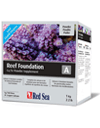



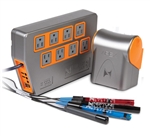

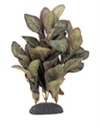

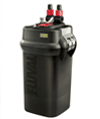

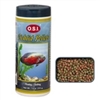





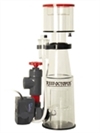





 Nutrients
Nutrients